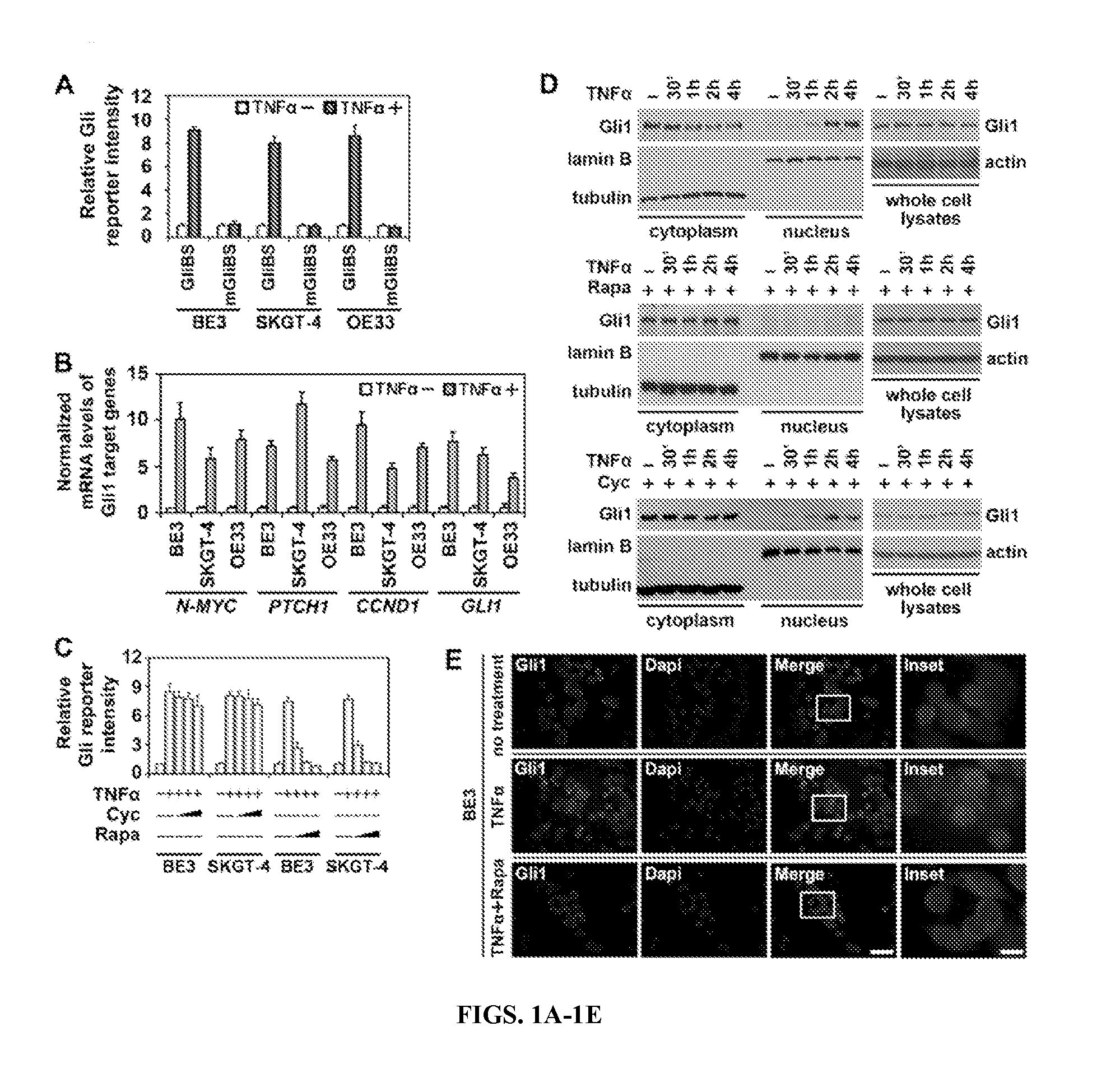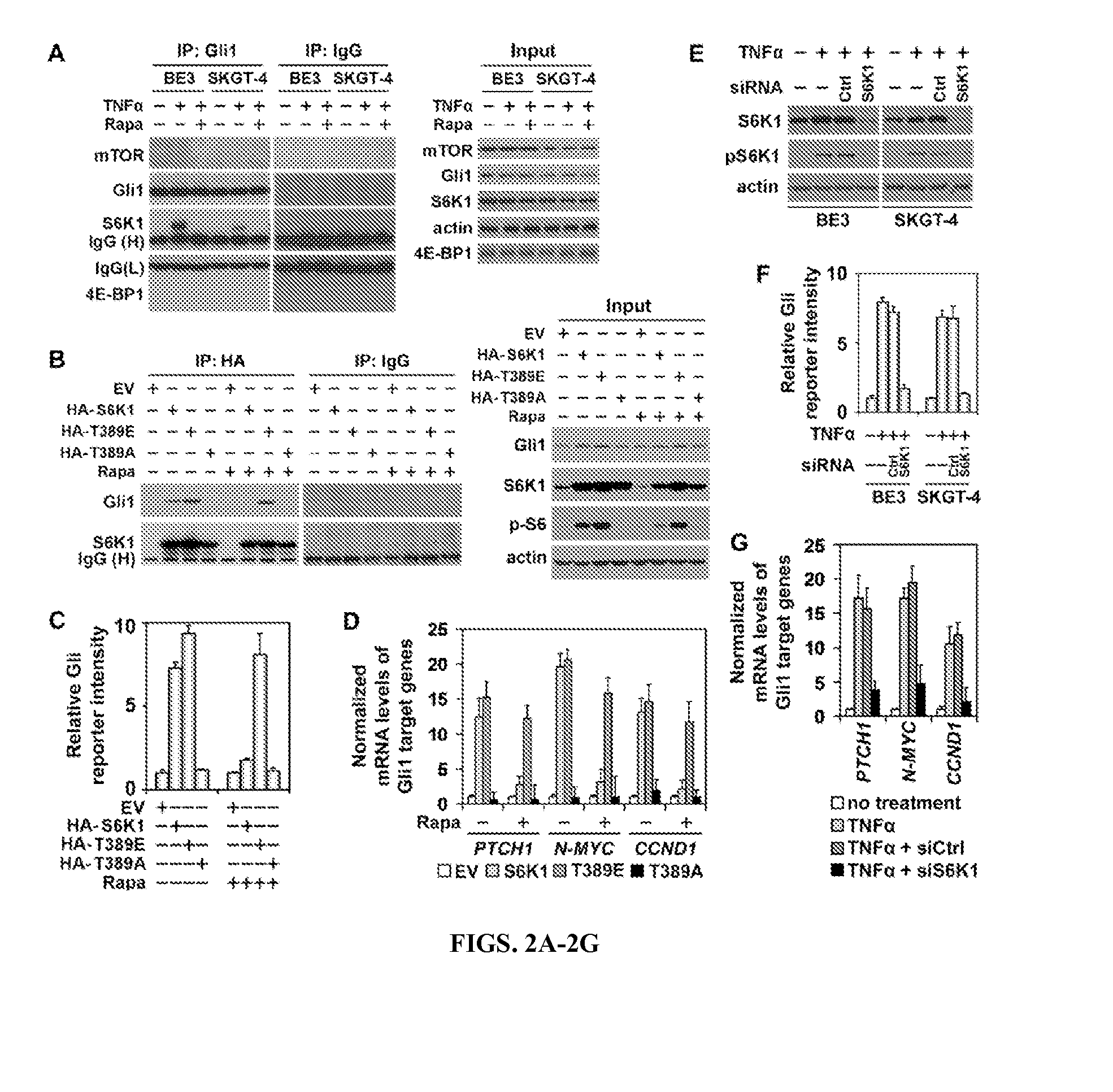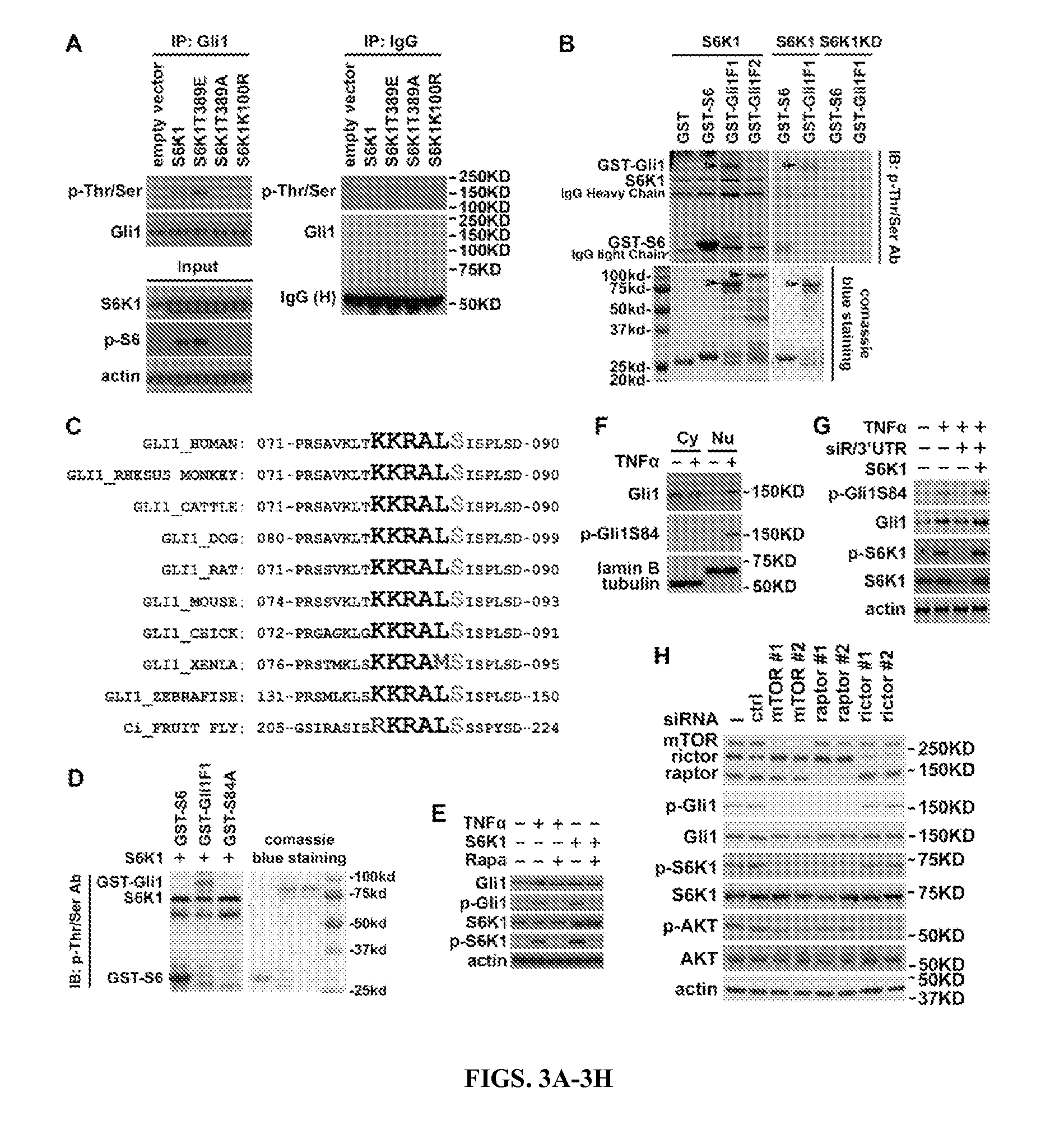Personalized medicine for the prediction of therapy targeting the hedgehog pathway
a technology of hedgehog pathway and personalized medicine, applied in the field of personalized medicine for the prediction of therapy targeting the hedgehog pathway, can solve problems such as multiple developmental deficits and malformations
- Summary
- Abstract
- Description
- Claims
- Application Information
AI Technical Summary
Benefits of technology
Problems solved by technology
Method used
Image
Examples
example 1
TNFα promotes Gli1 activity through the mTOR pathway
[0077]Because Gli protein activity is a useful readout for the HH pathway (Jiang and Hui, 2008), the inventors employed a Gli-dependent luciferase reporter system (Sasaki et al., 1997) to evaluate the influence of TNFα on the HH pathway in three EAC cell lines, BE3, SKGT-4, and OE33 (Boonstra et al., 2010). The inventors observed that TNFα increases the intensity of the reporter (FIG. 1A) and the mRNA levels of four Gli target genes (FIG. 1B). Therefore, TNFα can activate the HH pathway in the EAC cells. Then, the inventors compared the activity of HH pathway in EAC cells stimulated by SHH or TNFα. The inventors found that there is constitutive activation of HH pathway in EAC cell lines, which can be inhibited by SMO inhibitors, cyclopamine and GDC-0449 (Scales and de Sauvage, 2009). Both SHH and TNFα increased the activity of HH pathway in EAC cells with higher intensity from SHH (FIG. 9A).
[0078]To investigate whether TNFα-induced...
example 2
S6K1 mediates the regulation of Gli1 by TNFα.
[0080]To investigate how the mTOR pathway activates Gli1 activity, it was examined whether Gli1 interacts with the components of mTOR pathway. Without TNFα, no interactions were found between Gli1 and mTOR pathway components; with TNFα stimulation, however, a clear interaction was observed between Gli1 and S6K1, but not between Gli1 and mTOR or 4EB-P1 (FIG. 2A and FIG. 10A). Since Gli1 function is inhibited by SuFu, it was also examined whether there are any interactions between mTOR pathway components and SuFu. Unlike Gli1, SuFu did not interact with mTOR, S6K1, or 4EB-P1, regardless of TNFα treatment or not (FIG. 10B). Moreover, neither Gli2 nor Gli3 bound to mTOR, S6K1, or 4EB-P1 (FIGS. 10C and 10D). Taken together, the mTOR pathway might regulate Gli1 via S6K1.
[0081]Because S6K1 bound to Gli1 only under TNFα stimulation, it was hypothesized that S6K1 might need to be activated to interact with Gli1. To address this point, wild-type S6...
example 3
Gli1 is phosphorylated by S6K1 and required for TNFα / mTOR / S6K1-mediated cell proliferation.
[0083]Since S6K1 is a serine / threonine kinase, it was studies whether S6K1 regulates Gli1 through phosphorylation. Indeed, serine / threonine phosphorylation of Gli1 was observed with the ectopic expression of S6K1 or S6K1T389E (FIG. 3A), but neither S6K1T389A nor S6K1K100R (FIG. 3A). Furthermore, an in vitro kinase assay showed that only one of the Gli1 fragments containing amino acids 1-500, Gli1F1, was phosphorylated by S6K1 but not by S6K1K100R (FIG. 3B). The phosphorylation level of the Gli1F1 fragment was comparable to that of S6, suggesting that Gli1 was a substrate of S6K1 in vitro. 79-KKRALS-84 (SEQ ID NO: 1) was identified (FIG. 11A), which is highly conserved from fruit fly to human (FIG. 3C), as one potential S6K1-recognizing motif (K / RxRxxS / T; SEQ ID NO:2) in Gli1F1. When Ser84 was mutated to alanine (Gli1S84A), phosphorylation of Gli1 by S6K1 disappeared (FIG. 3D), suggesting that...
PUM
 Login to View More
Login to View More Abstract
Description
Claims
Application Information
 Login to View More
Login to View More - R&D
- Intellectual Property
- Life Sciences
- Materials
- Tech Scout
- Unparalleled Data Quality
- Higher Quality Content
- 60% Fewer Hallucinations
Browse by: Latest US Patents, China's latest patents, Technical Efficacy Thesaurus, Application Domain, Technology Topic, Popular Technical Reports.
© 2025 PatSnap. All rights reserved.Legal|Privacy policy|Modern Slavery Act Transparency Statement|Sitemap|About US| Contact US: help@patsnap.com



